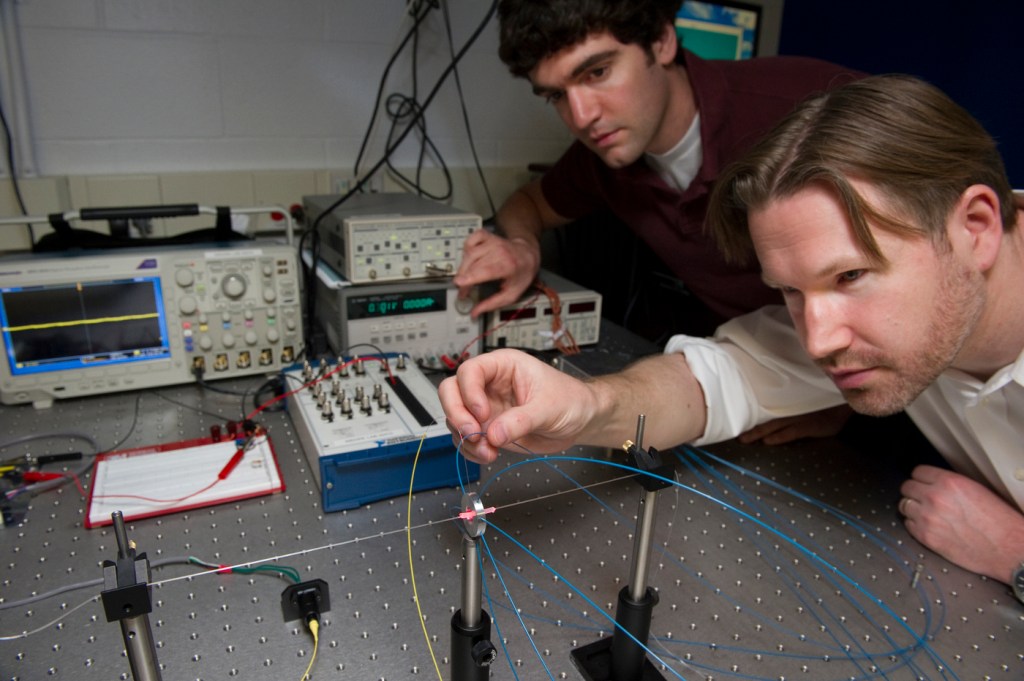A cell detective on the trail

Mark Niedre, assistant professor in Northeastern University’s College of Engineering, is developing new technology to track rare cells circulating in the bloodstream—a potential breakthrough that could dramatically expand biomedical research by leading to the detection of metastatic cancer cells and circulating hematopoietic stem cells.
Earlier this year, Niedre received a two-year, $400,000 grant from the National Institutes of Health’s R21 program, which encourages highly innovative exploratory research. He proposes to build a ring-shaped device that will fit around the limb of a mouse and, utilizing fiber-optics, non-invasively view and collect data on specific cells that have been fluorescently tagged as they pass through the mouse’s bloodstream.
Niedre says taking traditional blood samples might not capture the cells being sought after, and also provides merely a “snapshot” of the bloodstream, not a continuous view of how these rare cells are moving about over time. He says his research could prove to be a valuable tool to understanding how cancer metastasizes in the human body and ultimately, how those cancer cells respond to new drugs.
“If you could track one cell in a mouse, it just opens up all kinds of biology that you just can’t do right now,” Niedre says. “It’s an exciting concept.”
The research also holds the potential for monitoring stem cells, which scientists say help build the immune system in cancer patients. Niedre says if his work can determine whether certain drugs can keep these stem cells circulating in the bloodstream — rather than sticking to bone marrow once injected into the body—then the results could prove to be a valuable asset in treating cancer and other illnesses.
Niedre and graduate student Eric Zettergren are working now on building the prototype of the instrument, called a Tomographic in vivo Flow Cytometer, which could be complete by the end of the summer
Ultimately, Niedre hopes to be able to image an entire living being to further study where tumors are formed and how cancer spreads in the body.
“Often it’s the metastasis that kills people, not the primary tumor. I’m really interested in studying that process,” says Niedre, whose research also earned an award last year from the Massachusetts Life Sciences Center, a quasi-public agency of the Commonwealth of Massachusetts that promotes life sciences research and development.





